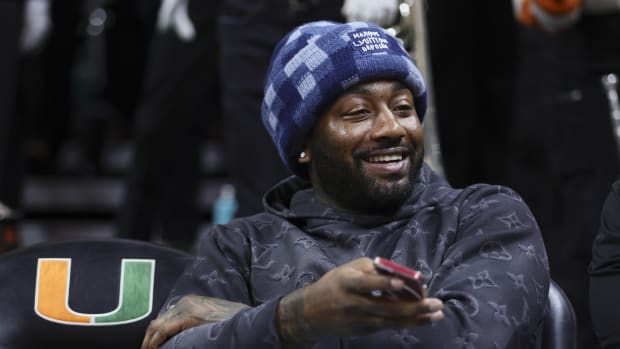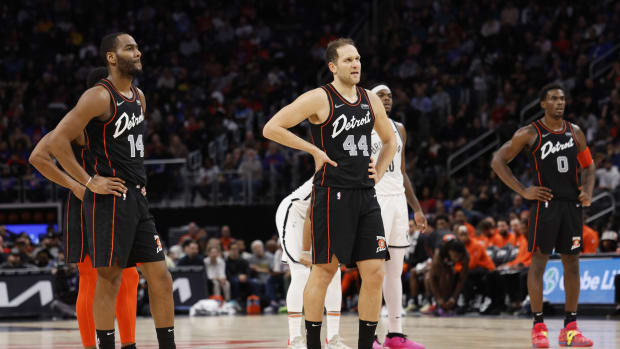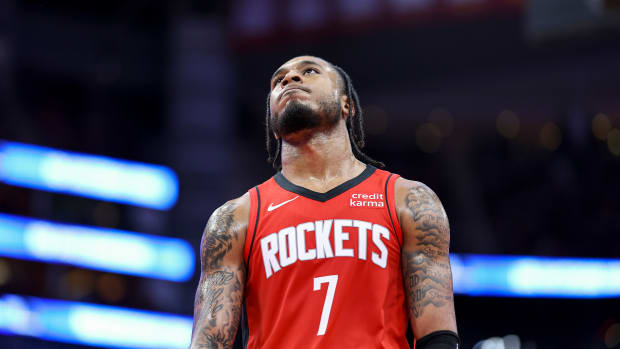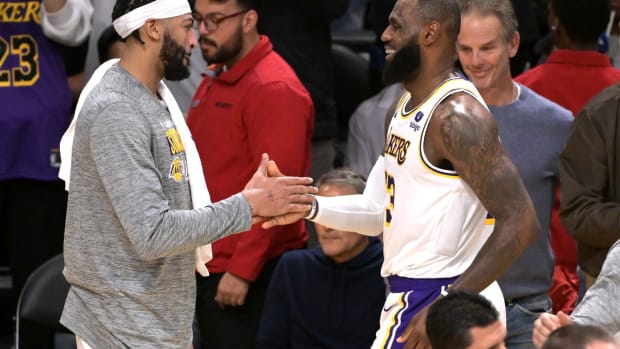Can the Spurs Survive Their Shot Selection Problem?
Spurs head coach Gregg Popovich offered a blunt assessment of the modern NBA and its three-point revolution prior to San Antonio’s 108-107 victory over the Bulls on Nov. 26. “I've hated the three for 20 years,” Popovich told NBA.com’s Sam Smith. “There's no basketball anymore, there's no beauty in it. It's pretty boring.”
Popovich’s comments played well into his curmudgeonly persona, a winking critique of the league’s three-happy transformation. But his words weren’t hypocritical. San Antonio has followed in lock step with Popovich’s three-point aversion in 2018-19, shooting triples at a minuscule rate.
The Spurs are currently No. 28 in the NBA in points made via the three and No. 27 in three pointers attempted. Their percentage of field goal attempts coming from three is last in the league, while their percentage of attempts via the midrange ranks second. Now sitting 12th in the Western Conference at 13–14, a key question has emerged: can San Antonio’s outdated offense survive the playoff race?
San Antonio’s aversion to the three isn’t necessarily problematic, nor is it out of line with past Popovich teams. San Antonio hasn’t ranked in the top half of the league in attempted threes in each of the last five seasons. Even the 2013-14 squad that bombed its way past LeBron James and the Heat in the NBA Finals ranked No. 16 in threes attempted and No. 13 in made threes. From the Tim Duncan era into Kawhi Leonard’s turn as San Antonio’s leading man, the Spurs have often found their identity without the three.
The Spurs’ recent avoidance of the three-pointer made DeMar DeRozan a natural fit at first glance. DeRozan is a midrange master like Leonard. He is third in the NBA in made mid-range shots per game at 3.5, while Leonard is fourth at 3.0. Yet despite the similarity in shot profile, DeRozan’s limitations have crunched San Antonio’s offense to a harsher degree than Leonard.
The effective difference between Leonard and DeRozan’s offensive arsenal is two-fold, highlighted by a stylistic divide. Leonard is a deliberate bruiser, bullying his way inside when he earns a switch. He contorts his body in a subtle, yet effective manner, finding critical separation that leads to his now-patented one-hand push shot. Leonard can work his way to any spot on the floor. Few players outside of Kevin Durant are better at generating clean looks from previously-contested shots.
DeRozan’s work inside the perimeter is muddier. He operates more from 15-19 feet, a couple of steps outside Leonard’s sweet spot near the foul line. DeRozan will hit turnarounds and fadeaways. He will take a step inside the three-point line off a screen. His childhood of watching Kobe Bryant clearly rubbed off, and while DeRozan does an impressive rendition on some nights, it often leads to evenings of inefficiency.
MAHONEY: First-Quarter NBA Awards
There’s also the sheer gravity Leonard commands as he works toward the tin. His power can lead to double teams, increasingly necessary when he gains a mismatch. More importantly, however, is how each Leonard attack forces the defense to shrink toward the paint, with perimeter limbs swiping at the ball and interior bigs shading to protect the tin. The defensive rotations allow Leonard an extra second to swing the ball to open shooters, who in turn have an extra step of space to pull the trigger. DeRozan demands similar respect on his downhill drives to the rim, though when he loiters outside the foul line, defenses are often content letting him work one-on-one. San Antonio’s wing shooters—this year consisting of Bryn Forbes, Patty Mills, Davis Bertans and Marco Belinelli—made a living off of kick outs from Duncan and Leonard in prior years. The free looks have been less available with DeRozan as the headliner.
Leonard won’t be mistaken for Steph Curry or James Harden, but teams at least respected his game from beyond the arc. He made two threes a game at 38% in 2016-17, his final full season with San Antonio. DeRozan has made just six threes this season, shooting a putrid 17.1%. That’s an untenable rate for any perimeter player not named Giannis Antetokounmpo.
NADKARNI: The Thunder Are Nearing Their Post-Kevin Durant Peak
DeRozan’s three-point shortcomings in Toronto were largely masked by his supporting cast. Kyle Lowry canned over three triples a game last season at 39.9%, while Serge Ibaka made 1.4 threes at 36%. DeRozan’s co-stars in San Antonio aren’t as stretchy. Rudy Gay is making 1.3 threes per game at an unsustainable rate of 49.2%. LaMarcus Aldridge is 0-9 from deep this year. With three mid-range artists leading the way, San Antonio has perhaps the league’s most crowded paint outside of Cleveland.
Five championships and 22-straight playoff appearances should buy Popovich and Co. some benefit of the doubt. San Antonio sits less than two games of the eight seed in the West, winning against the Lakers and the Jazz over the weekend. The panic button isn’t in sight. But this season feels like the last gasp of San Antonio’s golden era. The Spurs stayed afloat when Tim Duncan retired. Doing so without Leonard, Manu Ginobili and Tony Parker is a tall task. In the most competitive Western Conference in recent memory, San Antonio’s current shot profile is likely to end the NBA’s longest consecutive playoff streak.




































